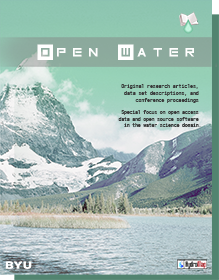Abstract
Limited freshwater resources in many parts of Australia have led to a highly regulated system of water allocation. Poor situation awareness can result in over-extraction of water from river systems, compromising river ecosystems. To increase situation awareness, the Tasmanian ICT Centre is developing a continuous ow forecasting system based on the Open Geospatial Consortium (OGC) Sensor Web Enablement (SWE) standards. SWE standards provide an interoperability layer over existing observation systems, numerical models and processing systems. A prototype Hydrological Sensor Web has been established in the South Esk river catchment in northeastern Tasmania. The Sensor Web aggregates sensor assets owned and operated by multiple agencies. Observations from these assets drive a rainfall-runoff model that predicts river ow at key monitoring points in the catchment. The intention is to use this information to manage water restrictions on a more proactive basis.
The generation of hydrological information such as predicted river flows, involves complex interactions between instruments, simulation models, computational facilities and data providers. Correct interpretation of information produced at various stages of the information life-cycle requires detailed knowledge of data creation and transformation processes. Such provenance information allows hydrologists and decision-makers to make sound judgments about the trustworthiness of hydrological information. Managing provenance information is an inherent part of the prototype South Esk Hydrological SensorWeb. Two major challenges had to be overcome to build the provenance management system: modelling provenance and tracking provenance information.
BYU ScholarsArchive Citation
Kloppers, Corné; Peters, Chris; Liu, Qing; Bai, Quan; Taylor, Peter; Malewski, Christian; Mueller, Heiko; Terhorst, Andrew; Lee, Brad; Zednik, Stephan; West, Patrick; and Fox, Peter
(2011)
"A Prototype Provenance Management System for a Continuous Flow Forecasting System,"
Open Water Journal: Vol. 1:
Iss.
1, Article 10.
Available at:
https://scholarsarchive.byu.edu/openwater/vol1/iss1/10
